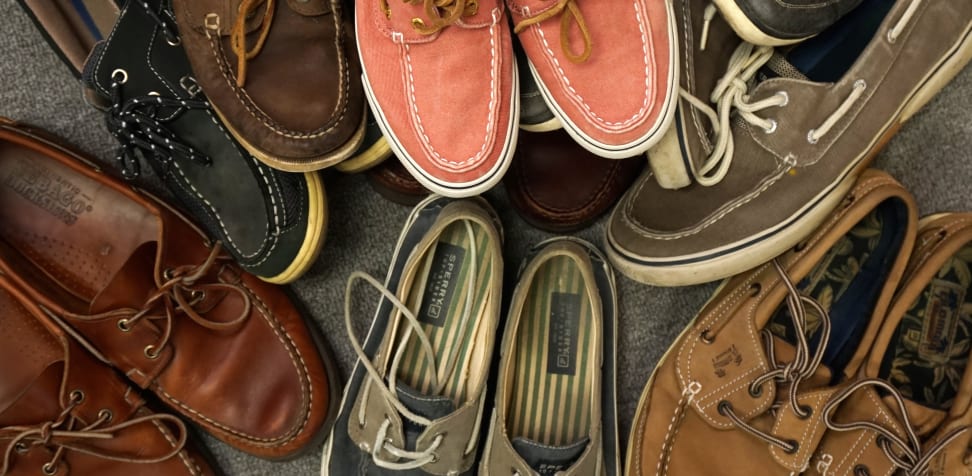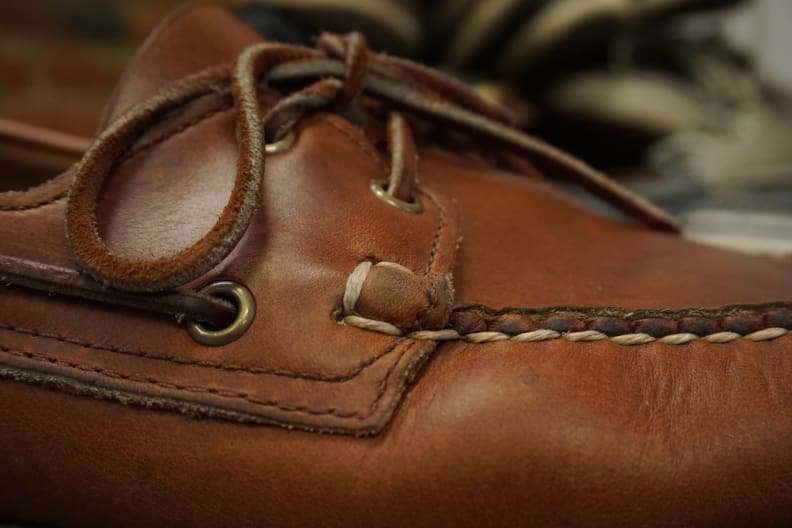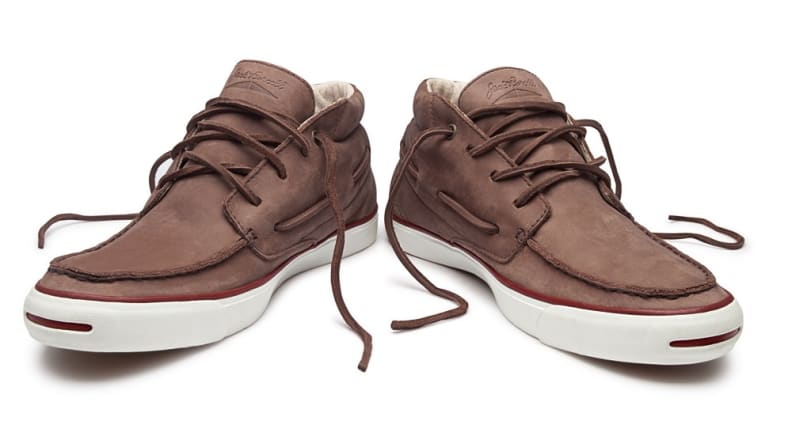How to keep your Sperry Top-Siders in top shape
From breaking them in to breaking the stink out
 Credit:
Credit:
Products are chosen independently by our editors. Purchases made through our links may earn us a commission.
As winter thaws and the days get warmer, my mind turns to the simple pleasures of summertime: porch beers, open windows, and wearing shoes without socks.
Going sock-less is one of the greatest luxuries of the fair weather season, and boat shoes are arguably the most stylish way to embrace this lifestyle. Unfortunately, they're not as simple as your average sneaker, and they require a bit of work to break in and keep clean.
But before you don those Sebagos or Sperry Top-Siders, heed these pointers about routine care and maintenance.
Break them in
The style and build of your boat shoes determines whether or not you're looking at a few weeks of limping, hobbling, and cursing.
Given their stiff build, leather boat shoes are probably the toughest type to break in. For me, the pain is almost always localized on the top of my toes and the back of my heels. But the breaking-in process is not limited to new shoes. Wearing an old pair of boat shoes for the first time in several months can be a painful endeavor if your feet aren't acclimated.
The good news is that pain isn't permanent, so you could just suck it up. If not, here are a few tips for staving off discomfort.
Band-Aids
I get it: Band-Aids are annoying. When they're not peeling off and getting lost in your shoe, they're painful to rip off. But you won't find a better way to separate the surface of your sensitive skin from the hard material of your boat shoes.
Friction Block
A co-worker introduced me to the Gold Bond brand "friction defense" stick, which is essentially a wide-set chapstick dispenser for your feet. It sounds strange, but I've had a decent experience using the friction-block stick. It won't provide all-day relief, but multiple applications throughout the day will provide considerable relief, especially if you're in a bind and don't have any Band-Aids on hand, or if you're just a cry baby.
Looser Laces
This bit of advice sounds obvious, but I somehow need to remind myself of it every summer: To prevent excess friction, just loosen the knots of your shoelaces. Don't keep them so loose that you risk falling out of them and twisting an ankle, but easing up on the laces is a good way to alleviate pain.

Though arguably the handsomest, leather boat shoes are the hardest to break-in and the trickiest to clean.
Clean them out
This winter I wrote extensively about how to care for leather and suede in wintery conditions, and luckily, the process remains more or less the same, even in spring and summer.
In short, a one-to-one mixture of water and white vinegar makes an excellent cleaning agent for both leather and suede. Avoid using direct, concentrated heat to dry leather boat shoes, as it might stiffen and crack the material.
Although canvas boat shoes are the simplest to clean, they're also the most susceptible to dirt, grime, and everyday wear-and-tear. Leather tends to age gracefully, whereas canvas benefits more from looking fresh and new.
A toothbrush and water are your best options for scrubbing the stains out of canvas. There are also dedicated canvas shoe cleaners, should you decide to bring in the reinforcements.
{{amazon name="Heinz White Vinegar - 32 oz", asin="B00Y5F4L42", align="right"}} It may go without saying, but unlike leather boots and dress shoes, leather boat shoes are designed to get wet. In fact, some people argue that getting them wet in the shower or in the rain is an easy way to speed up the breaking-in process.
Suede and canvas boat shoes are built to withstand some moisture as well, though don't expect them to dry out as quickly or to hold up as well over time.

That new shoe smell
We can't discuss boat shoe maintenance without devoting some time to the issue of smell, because let's be honest: Boat shoes can get pretty nasty.
Extending the life of your boat shoes is as much about caring for the insides as it is the outsides, and neglecting the inside of the shoe could potentially develop a tropical ecosystem of moisture and funk.
If you're one of the lucky ones who doesn't experience this phenomenon, count your blessings.
Foot powder
Perhaps the most effective way to absorb sweat and mask unwanted odor is to dust—or douse–your feet in medicated foot powder. Personally, I ride hard for Gold Bond, but this has more to due with the fact that I've been using it reliably for years. Experiment with a few brands before landing on the one that works best for you.
There's no easy way around it: The process of applying foot powder is a bit of a mess. If you're planning on powdering your tootsies in the tub or on the bathroom tile, a word of caution: Foot powders tend to get as slippery as black ice when mixed with water. Be very careful moving around your bathroom afterwards.
And if you don't like the idea of dousing your feet in powder like Andy Dufresne arriving at Shawshank, several brands come in spray cans for easy, mess-free application.
Replacing the insoles
In my experience, the inside of my Top-Siders have degraded much quicker than the outside—the insoles deteriorate while the outside of the shoes stay in good shape. This presents somewhat of a conundrum: The shoes themselves aren't ready to be retired, but the insoles have gotten old, stinky, and busted.
An easy way to rejuvenate your boat shoes is to replace the insoles once or twice a season, depending on how much mileage you're getting out of them.
Companies like Aldo sell insoles at a relatively affordable clip. For boat shoes, I prefer terrycloth insoles—they're thin enough not to disrupt the sizing of your shoes, and they do a serviceable job absorbing sweat.
